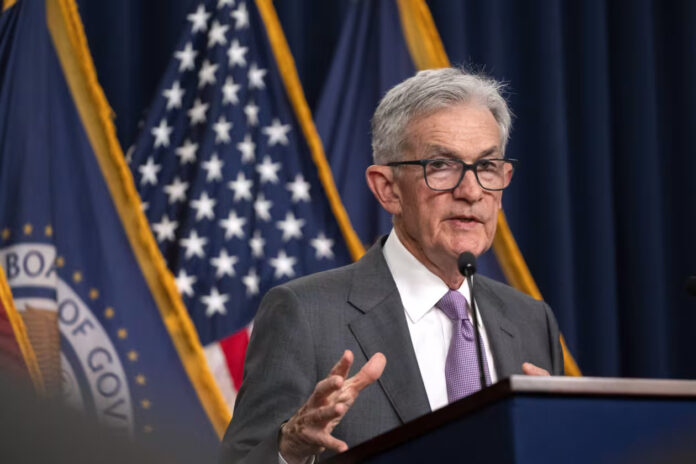In the ever-shifting landscape of global finance, few events are as closely monitored as a U.S. Federal Reserve meeting. This week, all eyes are on the Fed, with a strong expectation that the central bank may announce a rate cut. This anticipation is not just a routine market reaction but signifies a deeper shift in economic conditions that have evolved over the past two years. Investors worldwide are keenly observing, understanding that any decision by the Fed has far-reaching implications beyond the American economy.
The Fed’s Recent Policy Path
To understand the potential impact of a rate cut, it’s important to revisit the Fed’s recent policy trajectory. The central bank’s aggressive rate hikes from early 2022 saw the federal funds rate rise from a historically low range of 0-0.25% to 5.25-5% by mid-2023. These hikes were a response to rising inflation, which had been fueled by a combination of pandemic-related supply chain disruptions, heightened consumer demand, and geopolitical tensions.
Initially, the Fed had deemed the inflationary pressures as temporary, but as these pressures proved persistent, the central bank was forced to adopt a more aggressive stance. The intent behind these hikes was to cool the overheated economy by making borrowing more expensive, thus slowing down consumer spending and business investments.
Current Economic Indicators
Today, the economic landscape has shifted, with inflation showing signs of moderation and edging closer to the Fed’s 2% target. This development is a crucial indicator for the central bank, suggesting that the aggressive rate hikes may have achieved their intended effect of curbing price increases.
At the same time, the labor market is experiencing signs of slowing down. Job growth has weakened, which adds another layer of complexity to the Fed’s decision-making process. With inflationary pressures easing and employment figures showing signs of distress, the central bank faces the challenging task of balancing these dynamics.
Implications of a Potential Rate Cut
A decision to cut rates would represent a significant change in the Fed’s approach, moving from a strategy focused on curbing inflation to one aimed at supporting economic growth. For investors, this shift carries multiple implications:
1. Impact on Financial Markets:
A rate cut is likely to affect various asset classes. Lower interest rates generally reduce borrowing costs, which can stimulate both investment and consumer spending. This could have a positive effect on stock markets, as businesses benefit from cheaper capital and potentially higher earnings. Conversely, a rate cut might also indicate that the economy is weaker than expected, which could raise concerns about future growth prospects. Investors will closely monitor how this decision impacts market sentiment and asset valuations.
2. Currency and Global Effects:
A reduction in U.S. interest rates could lead to a weaker dollar. Lower rates may diminish the attractiveness of U.S. assets to international investors, leading them to seek higher yields elsewhere. This could affect global trade dynamics, making U.S. exports more competitive while potentially influencing capital flows across borders. Emerging markets, particularly those with dollar-denominated debt, might benefit from a weaker dollar, easing some financial pressures.
3. Consumer Behavior and Economic Activity:
Lower interest rates typically lead to reduced costs for loans and mortgages, which can boost consumer spending and stimulate economic activity. This could help support economic growth and offset some of the negative effects of previous rate hikes. How consumers respond to a rate cut will be a key factor in determining its overall impact on the economy.
The Fed’s Balancing Act
The Federal Reserve’s decision-making process involves careful consideration of multiple economic factors. While combating inflation is a primary goal, the Fed must also address broader economic conditions, including employment and growth. A rate cut at this juncture would reflect the Fed’s assessment that inflation pressures have eased and that the economy needs additional support to maintain growth.
The central bank’s approach must be measured to avoid reigniting inflation while providing the necessary support to bolster economic activity. How the Fed communicates its decision and future policy direction will be critical in guiding investor expectations and market reactions.
The Path Forward
As the Federal Reserve approaches its decision, the key questions are how substantial the rate cut will be and how it will influence future policy. A cautious and gradual approach may be preferred to ensure that the economy remains on a stable trajectory without reversing progress on inflation control.
The Fed’s guidance on future policy will also play a crucial role. Clear communication regarding the central bank’s outlook and intentions will help investors navigate the implications of the rate cut and adjust their strategies accordingly.
In summary, the anticipation of a rate cut by the Federal Reserve is more than just a numerical adjustment; it reflects significant changes in economic conditions and expectations. For investors, the Fed’s upcoming decision is a pivotal moment that will impact financial markets, investment strategies, and global economic interactions. As the central bank deliberates, the global financial community remains attentive, understanding that the Fed’s actions will have far-reaching consequences for economies and markets around the world.
Disclaimer: The thoughts and opinions stated in this article are solely those of the author and do not necessarily reflect the views or positions of any entities represented and we recommend referring to more recent and reliable sources for up-to-date information.









